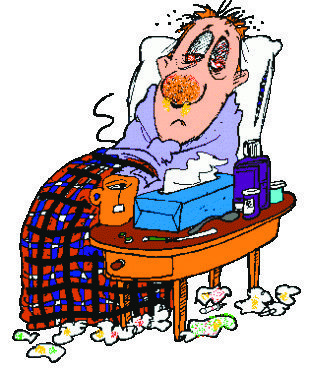
Is it a cold or a flu?
The common cold is the number one reason for lost work and school time throughout the industrialized world.
According to Lea Regional Medical Center officials, the average adult will get two or three colds each year, while children can go through 5-10 cycles. The typical cold starts with sore throat and runny nose, followed by sneezing and coughing. Most people will recover fully within a week or ten days.
“There are more than 200 different viruses that can cause a cold, the most common being the rhinovirus,” said Dr. Mario Henriquez of the Lea Regional Medical Group. “While a cold can vary in intensity from mildly annoying to quite severe, it’s important to note that they are still viruses. Antibiotics will have no effect – you can treat the symptoms but just have to wait it out.”
Perhaps the question asked most frequently in primary and urgent care offices across the country is, “Do I have a cold, a sinus infection, or the flu?” While your physician and local urgent care center no doubt can rule out things like the flu and strep throat in minutes with a simple swab test, determining between a cold and sinus infection is trickier – and in many cases, irrelevant.

Only a small number of cases involving cold- and flu-like symptoms are bacterial in nature. Therefore, the vast majority of cases will not respond to antibiotics. This leaves most patients with no course of action but to try and get through the virus with minimal pain and suffering. We’ll focus on those efforts here.
• Manage a fever. A fever is rare with a cold, in both adults and children. One of the best ways to distinguish a cold from a suspected case of flu is by a fever. If you or your child experiences a fever of 101 or higher for more than a day, it’s best to get a flu test just to be safe. Otherwise, acetaminophen is the preferred method for reducing fever – just be VERY mindful of dosing instructions, and don’t take more than one medicine at a time containing acetaminophen. Ibuprofen can also be used, but avoid aspirin and NEVER give it to a child under age 12.
• Stop a runny nose/post-nasal drip. Your sore throat (if not a strep infection) is most likely being caused by nasal discharge dripping down your throat. The best way to dry it up is with antihistamines. Note: they can make some people very sleepy, so plan accordingly.
• Un-clog your nose. A stuffed nose is a terrible feeling, and can prevent you from sleeping for several nights in a row during a cold. Talk to your doctor or the pharmacist about the best over-the-counter decongestant choice for you, and be cautious not to overuse.
• Relieve sinus pressure and pain. Nasal steroids, both over the counter and prescription, can relieve cold symptoms and seasonal allergies.
• Loosen cough or mucus. If you can’t kick the cough and move the mucus out, try an expectorant to help thin the thick drainage and move it out through nose and mouth.
• Reduce coughing. For many people, the cough is the worst part of a cold. Try an antitussive or another product with dextromethorphan to help suppress the cough and get some sleep.
• Relieve a sore throat. Gargle with warm salty water a couple of times per day, and try throat lozenges or an analgesic at bedtime. Monitor your throat for white or yellow spots or severe/increasing pain that may indicate a strep infection.
• Get some ZZZZZ’s. Your immune system needs sleep to fight back. Nighttime over-the-counter products should be used judiciously, but can provide much relief. Be sure to read labels and find products safe for you, especially if you have high blood pressure or other medical conditions, or are taking other products with similar ingredients.
One of the most confusing parts of diagnosing a cold is the multitude of symptoms. For instance, you may be diagnosed with an inner ear infection, a lower respiratory tract infection, or sinusitis. However, the majority of all of these cases, too, are viral in nature – not bacterial. Thus antibiotics will still be ineffective in treating or shortening the illness.
It’s important, however, to see your physician if your symptoms move beyond the basic ones listed above. A lower respiratory infection can take harbor in the lungs and turn into pneumonia, and sinusitis left untreated can result in a bacterial infection. Your doctor is the best resource to distinguish between a viral and bacterial condition, and to recommend the appropriate course of treatment, if any.
“While frustrating, there isn’t much we can do to avoid getting colds altogether,” said Dr. Henriquez. “Keep your immune system strong with proper diet and exercise, practice good hygiene to avoid catching the viruses others are carrying, and get your flu shot to reduce your odds of a more severe illness and complications.”
For the times when the common cold turns into something more complex, it’s important to have a primary care physician who knows you and your history, and can quickly evaluate and treat you appropriately. If you need to be connected with a personal or family physician, Henriquez specializes in Family Medicine at Lea Regional Medical Group: Primary and Urgent Care (formerly Zia Family Healthcare).
To make an appointment, call 575-492-5764 or visit www.myhobbsdoc.com. Lea Regional Medical Group: Primary & Urgent Care is located at 5320 N. Lovington Hwy., and is open Monday through Friday 7 a.m.-7 p.m., and Saturday 8 a.m.-1 p.m. Same day appointments are available, and walk-ins are always welcome.













